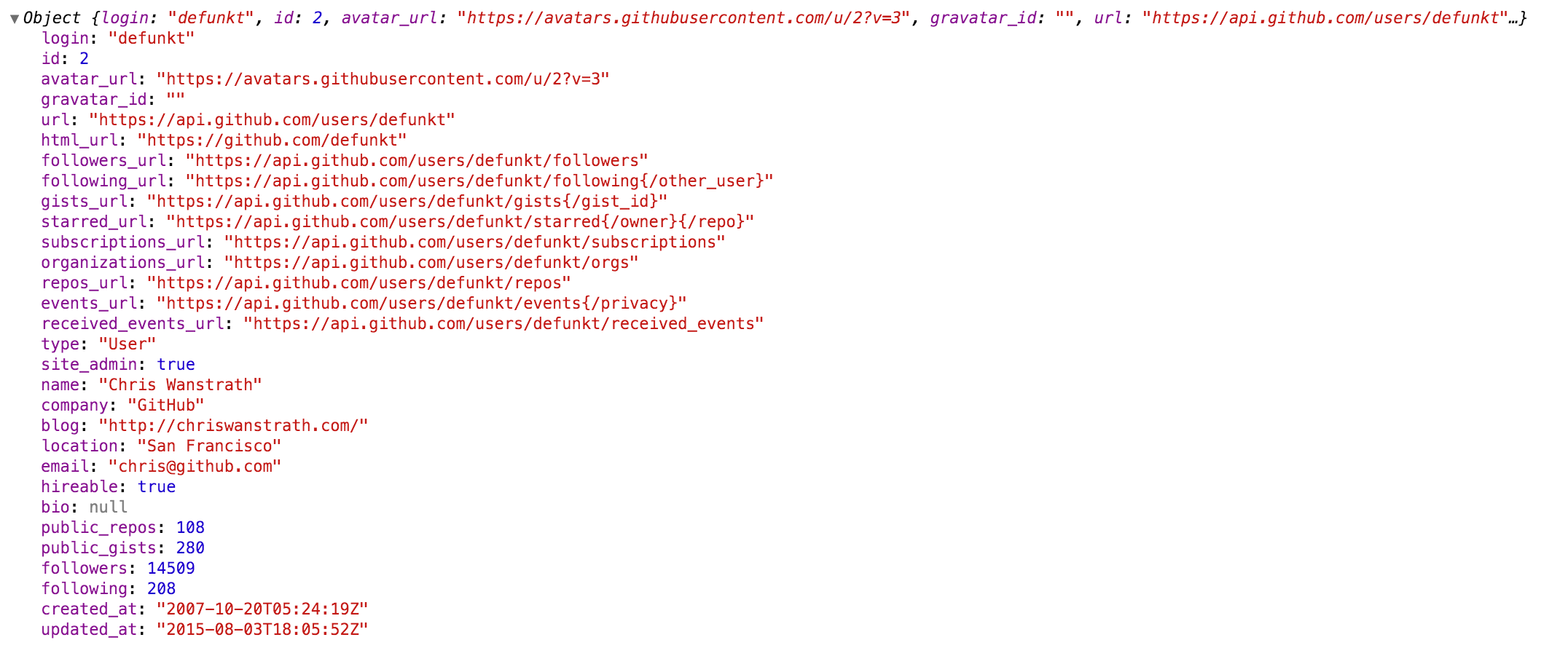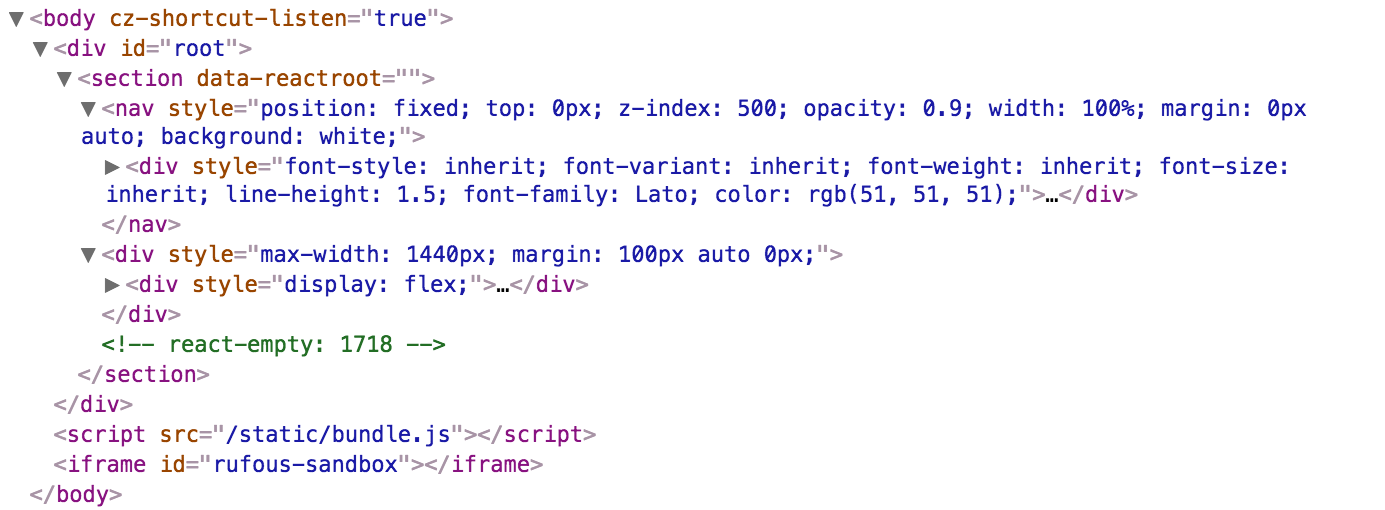https://github.com/storybookjs/react-inspector
🔍 Power of Browser DevTools inspectors right inside your React app
https://github.com/storybookjs/react-inspector
Last synced: 9 months ago
JSON representation
🔍 Power of Browser DevTools inspectors right inside your React app
- Host: GitHub
- URL: https://github.com/storybookjs/react-inspector
- Owner: storybookjs
- License: mit
- Created: 2016-03-22T06:38:46.000Z (over 9 years ago)
- Default Branch: master
- Last Pushed: 2024-10-12T05:47:56.000Z (about 1 year ago)
- Last Synced: 2024-10-30T00:55:30.259Z (about 1 year ago)
- Language: TypeScript
- Homepage: https://5d8cb665bc622e0020296079-dippbxxgcq.chromatic.com/
- Size: 4.68 MB
- Stars: 769
- Watchers: 61
- Forks: 95
- Open Issues: 30
-
Metadata Files:
- Readme: README.md
- Changelog: HISTORY.md
- License: LICENSE
Awesome Lists containing this project
- awesome - react-inspector
README
# react-inspector
[](https://travis-ci.org/storybookjs/react-inspector)
[](https://www.npmjs.com/package/react-inspector)
[](https://www.npmjs.com/package/react-inspector)
Power of [Browser DevTools](https://developers.google.com/web/tools/chrome-devtools/) inspectors right inside your React app. Check out the [interactive playground](https://storybookjs.github.io/react-inspector/) or [storybook](https://react-inspector.netlify.com).



## Install
NPM:
```sh
npm install react-inspector
```
Recommended versions:
- version `3.0.2`: If you are using React 16.8.4 or later.
- version `2.3.1`: If you are using an earlier version of React.
## Getting started
### <Inspector />
A shorthand for the inspectors.
- `` is equivalent to `` or `` if inspecting a DOM Node.
- `` is equivalent to ``.
### <ObjectInspector />
Like `console.log`. Consider this as a glorified version of `
JSON.stringify(data, null, 2)
`.
#### How it works
Tree state is saved at root. If you click to expand some elements in the hierarchy, the state will be preserved after the element is unmounted.
#### API
The component accepts the following props:
**`data: PropTypes.any`:** the Javascript object you would like to inspect
**`name: PropTypes.string`:** specify the optional name of the root node, default to `undefined`
**`expandLevel: PropTypes.number`:** an integer specifying to which level the tree should be initially expanded
**`expandPaths: PropTypes.oneOfType([PropTypes.string, PropTypes.array])`:** an array containing all the paths that should be expanded when the component is initialized, or a string of just one path
- The path string is similar to [JSONPath](https://goessner.net/articles/JsonPath/).
- It is a dot separated string like `$.foo.bar`. `$.foo.bar` expands the path `$.foo.bar` where `$` refers to the root node. Note that it only expands that single node (but not all its parents and the root node). Instead, you should use `expandPaths={['$', '$.foo', '$.foo.bar']}` to expand all the way to the `$.foo.bar` node.
- You can refer to array index paths using `['$', '$.1']`
- You can use wildcard to expand all paths on a specific level
- For example, to expand all first level and second level nodes, use `['$', '$.*']` (equivalent to `expandLevel={2}`)
- the results are merged with expandLevel
**`showNonenumerable: PropTypes.bool`:** show non-enumerable properties
**`sortObjectKeys: PropTypes.oneOfType([PropTypes.bool, PropTypes.func])`:** Sort object keys with optional compare function
When `sortObjectKeys={true}` is provided, keys of objects are sorted in alphabetical order except for arrays.
**`nodeRenderer: PropTypes.func`:** Use a custom `nodeRenderer` to render the object properties (optional)
- Instead of using the default `nodeRenderer`, you can provide a
custom function for rendering object properties. The _default_
nodeRender looks like this:
```js
import { ObjectRootLabel, ObjectLabel } from 'react-inspector'
const defaultNodeRenderer = ({ depth, name, data, isNonenumerable, expanded }) =>
depth === 0
?
: ;
```
### <TableInspector />
Like `console.table`.
#### API
The component accepts the following props:
**`data: PropTypes.oneOfType([PropTypes.array, PropTypes.object])`:** the Javascript object you would like to inspect, either an array or an object
**`columns: PropTypes.array`:** An array of the names of the columns you'd like to display in the table
### <DOMInspector />
#### API
The component accepts the following props:
**`data: PropTypes.object`:** the DOM Node you would like to inspect
#### Usage
```js
import { ObjectInspector, TableInspector } from 'react-inspector';
// or use the shorthand
import { Inspector } from 'react-inspector';
const MyComponent = ({ data }) =>
let data = { /* ... */ };
ReactDOM.render(
,
document.getElementById('root')
);
```
Try embedding the inspectors inside a component's render() method to provide a live view for its props/state (Works even better with hot reloading).
### More Examples
Check out the storybook for more examples.
```sh
npm install && npm run storybook
```
Open [http://localhost:9001/](http://localhost:9001/)
## Theme
By specifying the `theme` prop you can customize the inspectors. `theme` prop can be
1. a string referring to a preset theme (`"chromeLight"` or `"chromeDark"`, default to `"chromeLight"`)
2. or a custom object that provides the necessary variables. Checkout [`src/styles/themes`](https://github.com/storybookjs/react-inspector/tree/master/src/styles/themes) for possible theme variables.
**Example 1:** Using a preset theme:
```js
```
**Example 2:** changing the tree node indentation by inheriting the chrome light theme:
```js
import { chromeLight } from 'react-inspector'
```
## Roadmap
Type of inspectors:
- [x] Tree style
- [x] common objects
- [x] DOM nodes
- [x] Table style
- [ ] Column resizer
- [ ] Group style
## Contribution
Contribution is welcome. [Past contributors](https://github.com/storybookjs/react-inspector/graphs/contributors)
## Additional
- If you intend to capture `console.log`s, you may want to look at [`console-feed`](https://www.npmjs.com/package/console-feed).
- `react-object-inspector` package will be deprecated. `` is now part of the new package `react-inspector`.
- Why inline style? [This document](https://github.com/erikras/react-redux-universal-hot-example/blob/master/docs/InlineStyles.md) summarizes it well.